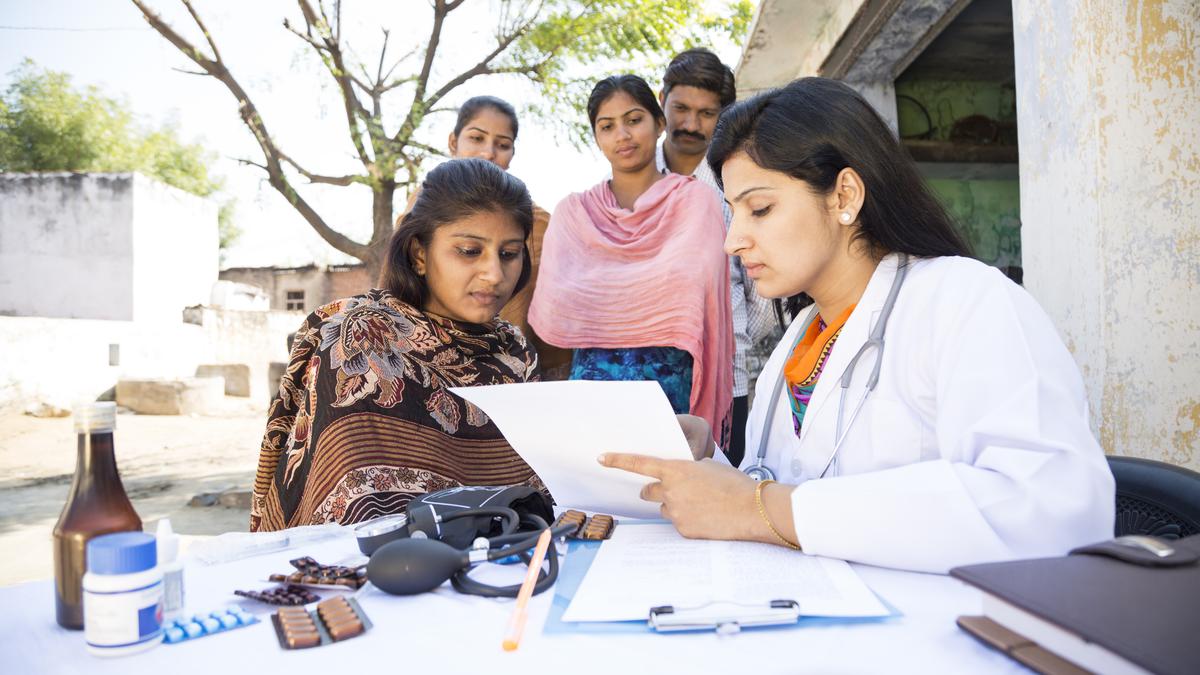This image from video provided by the Indian Space Research Organisation shows the surface of the moon as the Chandrayaan-3 spacecraft prepares for landing on Wednesday, Aug. 23, 2023. India became the first country to land a spacecraft near the moon’s south pole, which scientists believe could hold vital reserves of frozen water.
| Photo Credit: AP
Indian Space Research Organisation charted history this week as Chandrayaan-3 successfully landed on the moon’s surface, making it the fourth country to do so and the only country to do so in the south polar region. Find this week’s latest findings and discoveries from the field of science.
Chandrayaan-3 lands on the south pole of Moon
At 6.03 pm IST on August 23, the Chandrayaan-3 lander touched down on the moon’s surface, in the south polar region. The landing followed a 19-minute sequence in which the spacecraft used its engines, thrusters, and a suite of sensors to guide itself from an altitude of around 30 km and a speed of 1.7 km/s down to the ground. The success made India the fourth country to have soft-landed a robotic instrument on the moon and the first to have done so in the moon’s south polar region. This elite stature also boosts other countries’ confidence in the Indian Space Research Organisation (ISRO), which built, launched, and now operates the Chandrayaan-3 instruments.
Sun-observing spacecraft sheds light on the solar wind’s origin
New observations by the Solar Orbiter spacecraft may provide an answer to the origin of solar winds. Researchers have said that the spacecraft has detected numerous relatively small jets of charged particles expelled intermittently from the corona – the sun’s outer atmosphere – at supersonic speeds for 20 to 100 seconds. The jets emanate from structures on the corona called coronal holes where the sun’s magnetic field stretches into space rather than back into the star. They are called “picoflare jets” due to their relatively small size. Scientists think that these jets could actually be a major source of mass and energy to sustain the solar wind.
New findings suggest that LK-99 is probably not a superconductor
In July 2023, a group of scientists in South Korea uploaded two preprint papers claiming that a lead apatite material called LK-99 was an ambient condition superconductor. The group’s two papers elicited a mixture of surprise and scepticism in the scientific community – surprise because of the apatite, and scepticism because of the history of superconductivity. A group from India from the CSIR-National Physical Laboratory, New Delhi, was one of the first to report that it didn’t find any signs of superconductivity in LK-99. As far as current evidence suggests, LK-99 is not a superconductor.
Missed childhood TB cases impede achieving 2025 goal
With childhood TB continuing to remain a “staggering problem” in India, “eliminating” TB by 2025 might be extremely challenging. Nearly 0.34 million children <15 years of age in India are estimated to get TB disease every year. While children in this age group are estimated to contribute about 13% of the total TB caseload, only 6% are notified. As per the 2022 WHO global TB report, last year, children aged less than 15 years across the world accounted for 11% of the total estimated incident TB cases. Notwithstanding the 56% estimated TB detection gap in children globally, India contributes nearly one-third to the global childhood TB caseload.
The ‘weird’ male Y chromosome has finally been fully sequenced
Scientists have finally been able to sequence the Y chromosome in its entirety. The findings provide a solid base to explore how genes for sex and sperm work, how the Y chromosome evolved, and whether – as predicted – it will disappear in a few million years. The Y chromosome is male-determining because it bears a gene called SRY, which directs the development of a ridge of cells into a testis in the embryo. The embryonic testes make male hormones, and these hormones direct the development of male features in a baby boy. Without a Y chromosome and a SRY gene, the same ridge of cells develops into an ovary in XX embryos.
Tropical forests may be getting too hot for photosynthesis
A small percentage of leaves on trees in tropical forests may be approaching the maximum temperature threshold for photosynthesis to work, suggests a study published in Nature. An estimated 0.01% of all leaves currently surpass this critical temperature but there are uncertainties in the range of potentially critical temperatures in tropical trees. Modelling suggests that tropical forests can withstand up to a 3.9 degree C increase over current air temperatures before a potential tipping point, therefore action is needed to protect the fate of tropical forests under future climate change.
No emperor penguin chicks survived last year due to melting of Antarctic ice
The loss of ice in one region of Antarctica last year likely resulted in none of the emperor penguin chicks surviving in four colonies, researchers said. Researchers used satellite imagery to look at breeding colonies in a region near Antarctica’s Bellingshausen Sea. The images showed no ice was left there in December during the Southern Hemisphere’s summer, as had occurred in 2021. Researchers said it is likely that no chicks survived in four of the five breeding colonies they examined. Penguin chicks don’t develop their adult waterproof feathers until close to the time they usually fledge, in late December or January, scientists say.









